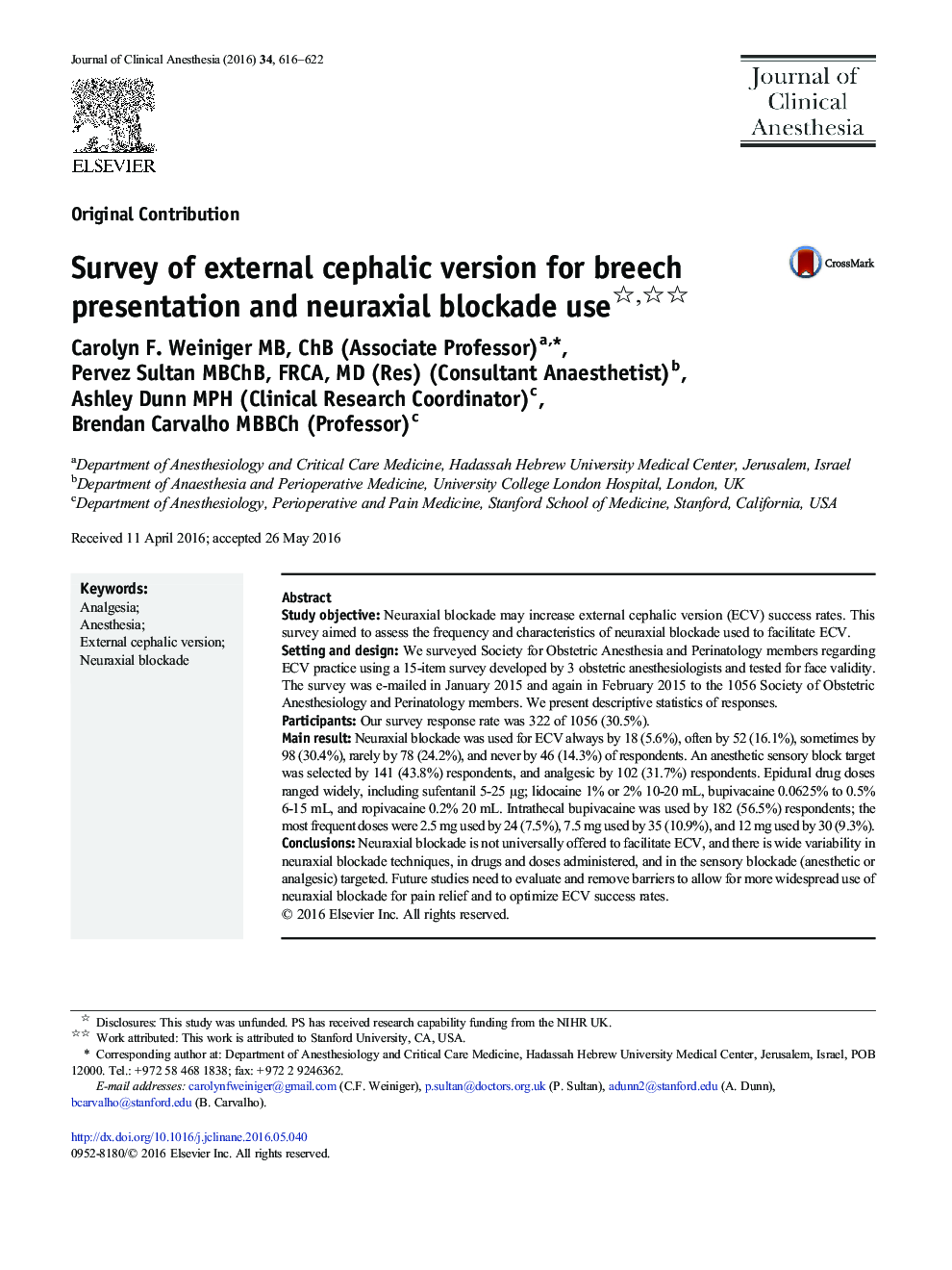| کد مقاله | کد نشریه | سال انتشار | مقاله انگلیسی | نسخه تمام متن |
|---|---|---|---|---|
| 5884577 | 1567656 | 2016 | 7 صفحه PDF | دانلود رایگان |
- We surveyed Society for Obstetric Anesthesia and Perinatology members regarding external cephalic version (ECV) practice, with a 322 of 1056 (30.5%) response rate.
- Only 40% of respondents always or often use neuraxial block to facilitate ECV.
- There is wide variability in neuraxial block techniques, drugs, and doses administered.
- Many responders use analgesia sensory block target doses that are not associated with increased ECV success.
Study objectiveNeuraxial blockade may increase external cephalic version (ECV) success rates. This survey aimed to assess the frequency and characteristics of neuraxial blockade used to facilitate ECV.Setting and designWe surveyed Society for Obstetric Anesthesia and Perinatology members regarding ECV practice using a 15-item survey developed by 3 obstetric anesthesiologists and tested for face validity. The survey was e-mailed in January 2015 and again in February 2015 to the 1056 Society of Obstetric Anesthesiology and Perinatology members. We present descriptive statistics of responses.ParticipantsOur survey response rate was 322 of 1056 (30.5%).Main resultNeuraxial blockade was used for ECV always by 18 (5.6%), often by 52 (16.1%), sometimes by 98 (30.4%), rarely by 78 (24.2%), and never by 46 (14.3%) of respondents. An anesthetic sensory block target was selected by 141 (43.8%) respondents, and analgesic by 102 (31.7%) respondents. Epidural drug doses ranged widely, including sufentanil 5-25 μg; lidocaine 1% or 2% 10-20 mL, bupivacaine 0.0625% to 0.5% 6-15 mL, and ropivacaine 0.2% 20 mL. Intrathecal bupivacaine was used by 182 (56.5%) respondents; the most frequent doses were 2.5 mg used by 24 (7.5%), 7.5 mg used by 35 (10.9%), and 12 mg used by 30 (9.3%).ConclusionsNeuraxial blockade is not universally offered to facilitate ECV, and there is wide variability in neuraxial blockade techniques, in drugs and doses administered, and in the sensory blockade (anesthetic or analgesic) targeted. Future studies need to evaluate and remove barriers to allow for more widespread use of neuraxial blockade for pain relief and to optimize ECV success rates.
Graphical Abstract305
Journal: Journal of Clinical Anesthesia - Volume 34, November 2016, Pages 616-622
